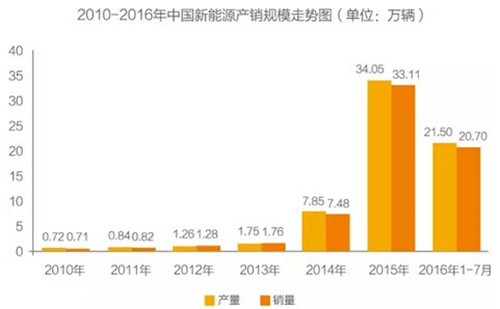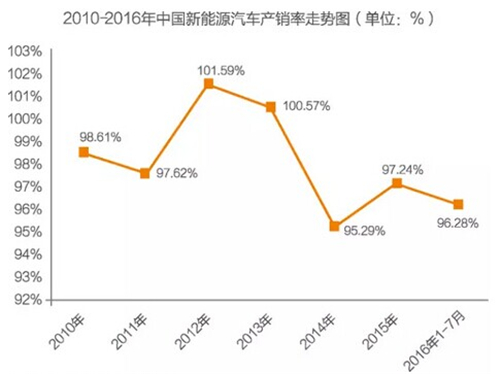Isolation requirements to protect patient safety
An important consideration when designing a medical product is that the product in contact with the patient meets the IEC 60601-1 safety standard and isolation rating. This standard specifies many aspects of medical electrical (ME) equipment to prevent damage to patients and operators from dangerous high voltages and high currents. One of the most critical aspects of personnel safety is minimizing leakage currents through the patient, including AC current, which is the most challenging part of product design. Since the isolation barrier always appears as a capacitive form, it is often necessary to minimize the isolation barrier to limit the AC leakage current caused by the signal voltage and the switching supply voltage, which causes capacitive current. Regardless of the electrical isolation mechanism employed, such as inductive or optical isolation, this capacitive or AC current is present because there is always a barrier capacitance. The most stringent leakage current is the leakage current flowing through the patient caused by the application components, such as the application parts of the CF type floating heart device, the probe pad of the electrocardiograph (ECG/EKG), and the like. In normal operation, the AC/DC leakage current must be less than 10μA. It is also necessary to prevent the patient and the operator from being damaged by the leak path of the casing or the accessible portion of the device. These currents that a patient or operator may be exposed to are referred to as "contact currents." Under normal conditions, the contact current between medical system components or components from the environment in which the patient is located should not exceed 100 μA. In the single fault state (SFC), the limit of the contact current is 500 μA. The so-called single fault state refers to the failure of the single-protection method or the existence of some abnormal condition. Medical electrical equipment must have a dual protection method (MOP) to prevent application components and other accessible components from exceeding leakage current and contact current limits. Protection methods include insulation, air voids, leakage distance, impedance, and protective grounding. There are two basic categories of medical electrical equipment. Class I medical electrical equipment means that the equipment is subjected to basic insulation measures and the accessible parts are protectedly grounded to provide additional safety. Class II medical electrical equipment means that the equipment not only protects against electrical shock through basic insulation, but also provides additional safety through double or reinforced insulation. Whether it is through protective grounding or depending on installation conditions to meet Class II safety requirements, there is no limit. Double insulation consists of basic insulation and supplementary insulation. Double insulation provides a dual protection method, while reinforced insulation is a single insulation system that also provides a dual protection method. In order to meet the requirements for the Patient Double Protection (MOPP) method, the component must be able to withstand the AC test voltage. For components with solid insulation and 5kVRMS rating, the AC test voltage means an operating voltage of 707VPK or 500VRMS. It is generally accepted that medical isolation measures must use an insulating material with a thickness of 0.4 mm to meet the shortest distance requirements. This is a standard that must be met for solid insulating materials that meet the requirements for double or reinforced insulation. Another applicable standard is that the insulator must consist of at least two layers of insulating material, each tested by a suitable dielectric strength. For reinforced insulation, the dielectric strength test must be sufficient to ensure that the dual protection method works. IEC 60601 states that when the device is connected to a patient, the leakage current through the patient limits to 10 μADC under normal operating conditions and 50 μ ADC in a single fault condition. The acceptable range of AC leakage current through the patient varies from 10 μA to 1 mA, depending on the type of device, normal operation or single fault condition, and single or multiple application components. The safest application component for a patient is the F-type isolated (floating) application component, in which the patient connection point is isolated from the rest of the medical electrical device. This isolation must prevent any current flowing above the allowable patient from leaking, even if the unexpected voltage generated by the external source is connected to the patient and therefore between the patient connection point and the ground. The F-type application parts are further classified into a BF type (a floating part that can be used for a human body), or a CF type (a floating part that can be used for a heart). See Table 1, which summarizes the currents that can be allowed to flow through the patient. The table includes the current of the individual application components and the total leakage current through the patient. The total leakage current flowing through the patient refers to the leakage current when all of the application components required for medical device operation are in contact with the patient. Table 1: Leakage current and contact current that can be allowed to flow through the patient The contact current is also listed in Table 1. The contact current is the leakage current flowing from the casing or equipment components (excluding the patient connection point), which may be accessible to any operator or patient during normal use. The contact current flows through an external path rather than a protective ground conductor to the ground or to another part of the enclosure. The meaning of this term is the same as “case leakage currentâ€, and the meaning of the term is now consistent between IEC 60601 and IEC 60950, and correctly reflects the fact that leakage current is also suitable for normally grounded protective ground. part. In accordance with IEC 60601-1, components on the isolation barrier that meet the patient's dual protection method must maintain 4kVRMS isolation for a duration of 1 minute. The standard also defines a patient protection method (MOPP) that describes the isolation protection needed to reduce the risk of a patient suffering from electrical shock. There are also some requirements for the Operator Protection Method (MOOP). Medical electrical equipment requires a dual protection approach to reduce the electrical risk to patients and operators in the event of a failure that causes a protection method to be ineffective. Isolation protection requirements include leakage/gap distance, insulation and protective ground connections, contamination levels, and total leakage current. The patient's dual protection method requires a double of the leakage distance and air gap. Many medical electrical products are powered by standard 120VAC and 240VAC power supplies, which often increase to 250VAC. The patient's single-protection method requires a leakage distance of 4 mm and a patient double protection method of 8 mm. The 250VRMS is equal to 354 VDC (or peak) and requires a test voltage equal to 4 kV RMS for the patient dual protection method. As shown, 4kVRMS is a common isolation requirement for two MOPPs that are applied directly to a patient. There is an additional optional requirement that can be applied to many medical instruments to isolate voltages up to 5kVPK, which reiterates the need for 4kVRMS isolation voltage. This refers to the situation where the medical device and the application part must be protected against defibrillation. The anti-defibrillation application section refers to the protection provided thereon to prevent the discharge of the cardiac defibrillator from adversely affecting the patient. Essentially, a defibrillator is a series connection of a charging capacitor and an inductor that acts as a current limiter. When starting, this produces a gradually attenuating sine wave, and the peak voltage of the first ringing is likely to be significantly higher than the charge voltage on the capacitor itself. The IEC 60601 standard stipulates that 5kVPK is the maximum value of this voltage overshoot, so it is necessary to protect the patient from electric shock when the isolation barrier is broken during the patient's defibrillation. This type of design environment is extremely challenging. When developing products for the medical market, it is required to meet the requirements of IEC 60601. Linear Technology offers an increasingly expanded family of isolation devices to help meet medical isolation requirements. Linear Technology will introduce a family of 5kVRMS isolation devices that offer an integrated power supply to deliver up to 1W of power and an isolated data interface that eliminates the need for any external components. This family of devices is based on the 2.5kVRMS isolated RS485 micromodule (μModule) transceiver LTM2881, which provides uninterrupted communication at up to 20Mbps and withstands high voltage transient events. The product includes an isolated 1W DC/DC converter with up to 62% efficiency, providing sufficient power with a 5V stable output. From decoupling capacitors, diodes to switch termination resistors, everything is integrated into the module. The isolation barrier consists of two layers of dielectric material that can withstand voltages up to 5kV RMS, which will meet the requirements for leakage distance and clearance. The LTM2881 provides ±15kV ESD protection on the transceiver pins and across the isolation barrier. Figure 1: Complete isolated RS485/RS422 micromodule transceiver + 1W power supply An excellent fail-safe receiver ensures that the receiver output is in a logic high state when the input is shorted, placed in an open state, or terminated (but not driven). The receiver threshold is balanced to maintain the data duty cycle when using long network wiring. In addition, the LTM2881 also protects itself by disabling drivers and receivers in situations where power dissipation is excessive. At the same time, the 1.62V to 5.5V logic supply pin allows easy connection to digital components, while maintaining a TIA/EIA compatible RS485 signal with a 3.3V or 5V supply. The LTM2881 also provides a low current shutdown mode that draws less than 5μA when communication is not required. These new devices form a rugged solution that provides continuous communication and can withstand transient events above 30kV/μs. The LTM2881 offers a low EMI solution with a nominal 6pF barrier capacitance and meets EN 55022/CISPR 22 Class B emission requirements if followed by good layout practices. These new devices also include RS232 and digital logic isolators. version. Author: Linear Technology Products Mixed-Signal Design Center Manager Jeff Marvin Nbr Double Coating Fire Hose,Double Coating Durable Fire Hose,Flexible Fire Hose,Nbr Fire Fighting Rubber Hose NANTONG SENTIAN FIRE-FIGHTING EQUIPMENT CO.,LTD. , https://www.firehosefactory.com
